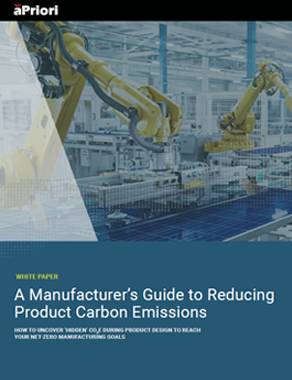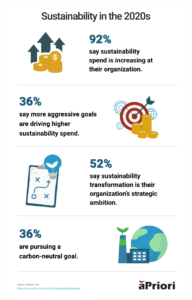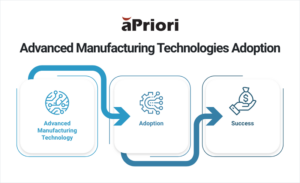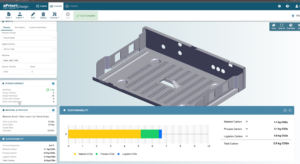Forgoing Manufacturing Sustainability Does Not Equate to Profitability
Though more manufacturers are recognizing the importance of sustainability, some continue to resist. One concern is that sustainability initiatives will cut into profits. This is a misconception.
While it is true that the initial sustainable practice investment could be expensive, it will be offset in the long run by a lower carbon footprint. Moreover, many governments are providing incentives to implement sustainable manufacturing practices. Conversely, they are imposing fines for those who do not meet sustainability legislative requirements. It could prove very costly to those businesses that resist the movement.
However, both sustainability and profitability are within reach. Manufacturers are recognizing it is possible. Gartner’s 2020 Sustainability survey results substantiate this statement. 100% of companies in some sectors have defined sustainability strategies, but only 40% believe that they have the knowledge and capabilities to achieve their targets.
In this article, we will demystify the misconceptions about sustainability at the expense of profitability. We will illustrate how the right manufacturing insights can make both goals possible, while further improving manufacturability.
Balancing Manufacturing, Sustainability, and Profitability
As the above Gartner survey results indicate, more organizations are understanding sustainability’s ever-increasing prominence and importance in their business goals and financial investments. Even more compelling is the fact that most businesses are driven by the demands of the customers rather than the environment itself (though it is part of the equation). The Gartner survey revealed that 63% of executives at organizations with sustainability programs indicated the customer is their most important catalyst for action.
What direction should manufacturers take in implementing sustainability initiatives? Many already have a distinct advantage over other industries since they have ramped up the digitization of their operations over the last few years. What’s more, many have had to rethink and retool their supply chain processes, thanks to the pandemic, the Ukraine war, and other recent developments. As a result, many are already focused on mitigating and managing their environmental impact.
For instance, higher fuel prices have warranted the need to rely on suppliers closer to their operations, which helps lower the carbon footprint. Labor shortages have motivated manufacturers to utilize digital processes and streamline operations to compensate for workforce shortfalls. Fewer manual processes and less overhead and energy usage also contribute to more sustainable manufacturing operations.
Though there has been good progress on the sustainability front, far too many manufacturers lag behind in this area. As previously mentioned, governments and other international organizations are stepping up to provide support for more sustainable manufacturing operations. For instance, the World Economic Forum is committed to closing these gaps and helping organizations move towards better, more comprehensive, and inclusive advanced manufacturing technologies adoption. To that end, they have set up the Global Lighthouse Network. Its purpose is to illustrate how these technologies can provide financial and operational gains by reinventing factories, value chains, and business models.
Four Ways Manufacturers Can Achieve Sustainability and Profitability
We know what you’re thinking. Easier said than done. True. Implementing initiatives as massive as sustainability can be daunting and fraught with speed bumps. Moreover, every manufacturer has its own unique set of challenges.
As an example, a manufacturer might require specific parts that have to travel through a long and complex supply chain. Another manufacturer might be on the sustainability track within the organization, but its partners are woefully behind. As a result, it technically prohibits the manufacturer from stating it is a fully sustainable organization.
It begs the question, “How can manufacturers work through these challenges and find the special sustainability and profitability sauce?” Here are four strategies that can help:
- Take a two-fold approach. Forgo traditional thinking that you can focus on the initiative, hoping that it leads to profitability. Instead, create a business strategy that works towards achieving both simultaneously. Manufacturing insights solutions facilitate this objective.
A good illustration can be found in design for sustainability. Its main aim is to reduce the resources used throughout a product’s production and lifespan. From the raw materials through the manufacturing process, design for sustainability reduces a product’s environmental impact as well as its lifespan – even the end of it. A product’s carbon footprint, which comes from the greenhouse gases emitted throughout the product’s life, is the highest sustainability priority for most manufacturers.
A manufacturing insights solution should help streamline and offer faster methods to measure, reduce, and analyze a product’s manufacturing CO₂ footprint. The 3D CAD data is quickly evaluated through a geometry-driven analysis to assess the CO₂ footprint. As a result, environmental and cost data drills down to granular, traceable, and transparent calculations, allowing manufacturers to improve sustainability initiatives without sacrificing profits.
- Rework your supply chain. Arguably the greatest impact on the carbon footprint lies in the supply chain. In fact, a World Economic Forum article revealed that supply chain emissions are on average over 11 times higher than operational emissions. Narrowing your geographical range of suppliers is one approach. Compare suppliers’ environmental impact based on their geographic location to lower the carbon footprint. Furthermore, look for suppliers that practice sustainability and can substantiate it with documentation. Regulatory requirements can vary greatly from region to region, making communication and collaboration across all product lifecycle channels crucial to meeting sustainability objectives.
Knowledge contained within aPriori’s Regional Data Libraries (RDLs) can enhance your sustainability commitment. Identify suppliers closer to home to help reduce your carbon footprint. Compare suppliers’ environmental impact based on their geographic location, due to the local electricity mix. Reduce material waste by selecting the most appropriate process. Then compare materials’ greenhouse gas (GHG) emissions for the lowest impact. From a financial perspective, costs such as fuel, storage fees, and more will be reduced. Additionally, more accurate insight into supplier costs can give manufacturers greater negotiation and buying power.
- Commit to lowering energy usage. The World Economic Forum article also noted that 54% of the world’s energy consumption is from the manufacturing industry. There are two areas where energy can be reduced: consumption and resource utilization. It isn’t always clear-cut whether that’s achievable, since there may be myriad facilities, processes, suppliers, and parts involved. Scope 3 emissions, also known as value chain emissions, are the result of activities from assets not owned or controlled by the reporting organization but that the organization indirectly impacts in its value chain. They often represent most of an organization’s total GHG emissions including both its upstream and downstream activities.
Manufacturing insights can show manufacturers where processes are consuming too much energy. For instance, they might discover through the product design feedback that a part they want to make will require 10 additional steps to complete production. Instead, manufacturing insights might recommend an alternative part that requires fewer production processes; thereby reducing consumption and energy costs.
Another example can be found in lightweighting. A tool like aPriori enables design engineers to baseline a product’s environmental impact for reporting as well as identify CO₂ outliers. Manufacturers also can optimize components for cost and CO₂ equivalents while ensuring manufacturability. Transportation is one area utilizing lightweighting in electric vehicles to reduce energy consumption and the carbon footprint. Fiber-reinforced plastic polymers can be used as structural components in and around an electric vehicle’s high-heat areas such as battery packs and motors. As a result, the electric vehicle is lighter, uses less energy, and is better performing. Such methods help manufacturers lower their carbon footprint while maintaining the product’s integrity. In the long run, it ensures sustainability goals are met and keeps costs in line.
- Create and foster a sustainability-profitability culture. For the most optimal results, subscribe to John Elkington’s “triple bottom line.” The idea is that businesses should focus on “profit, people, and planet.” He believed that all three were interdependent and that equal weight should be given to people and the environment as much as to profits.
If further proof is needed that this philosophy resonates, look no further than the statistics mentioned above. Customers are demanding sustainability within organizations. The planet is crying out for help as GHGs concentrations, global sea levels, and ocean heat content reached record highs in 2021. When customers and the general public see an organization’s commitment to “people” and the “planet”, then “profits” follow.
Top-Down Sustainability and Profitability
The most efficient means for building a culture and business plan that supports both sustainability and profitability starts at the top. Manufacturing leadership must advocate, communicate, practice, and support this effort. It also must span across the entire organization and as much as realistically possible, across suppliers and other partners as well.
How you do business influences your entire organization and ripples out to customers, suppliers, and of course, the environment. A manufacturing insights solution can be your greatest ally in this effort. It can mean the difference between succeeding or falling short. Best of all, you will lower your carbon footprint, improve operations (and most likely the quality of your product), achieve profitability, gain a competitive advantage, and measure and quantify your success with stakeholders and other investors.
Get aPriori's Exclusive Guide to Reducing Product Emissions
Sustainability and profitability don’t need to be an either/or proposition.











